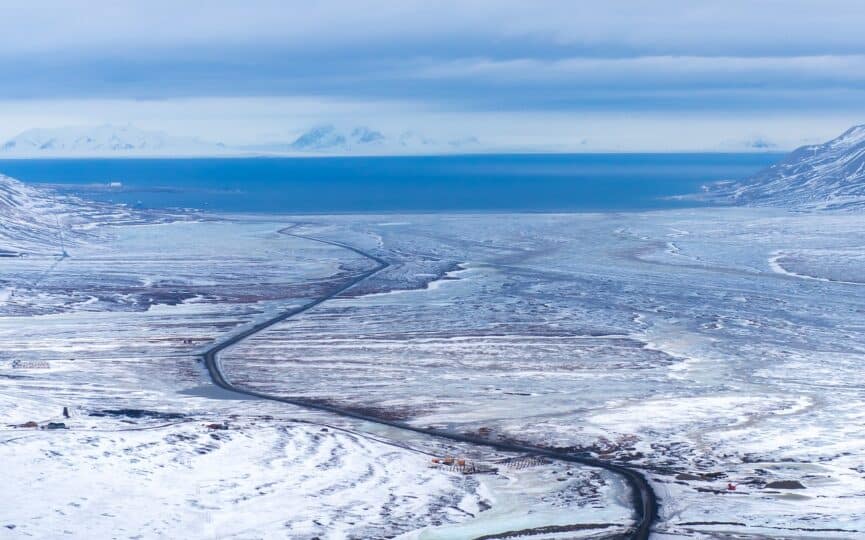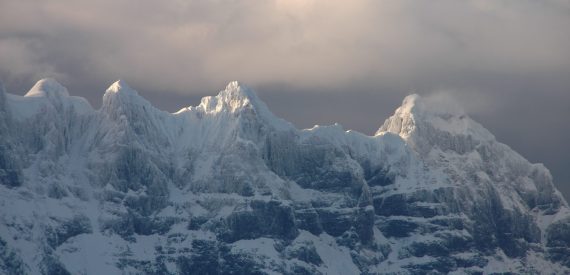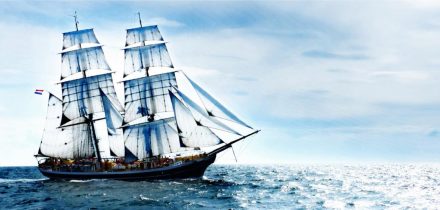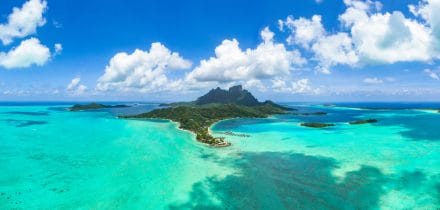In Old Norse, this archipelago is Svalbarð: ‘svalr’ meaning cold and ‘barð’ meaning rim, edge or shore. The cold shores of Svalbard (consisting of 9 main islands and countless small skerries), are situated in the Arctic Ocean between 74 and 81 degrees northern latitude. That’s less than 700 miles from the North Pole.
Shivering yet?
While many people’s dream of sailing is anchored off a beach in the Caribbean, cocktail in hand with nothing to do for a week, that’s not really the Classic Sailing way. We’re about hands-on traditional seafaring in astonishing places, respectful admiration of the natural world, wildlife spotting, exploration and adventure.
So while Svalbard might be a far-flung and chilly extremity in terms of sailing destinations, it features very high on our list. We asked Jim McNeill, Polar explorer and pioneer of Arctic citizen science, to give us the low down on this extraordinary place.
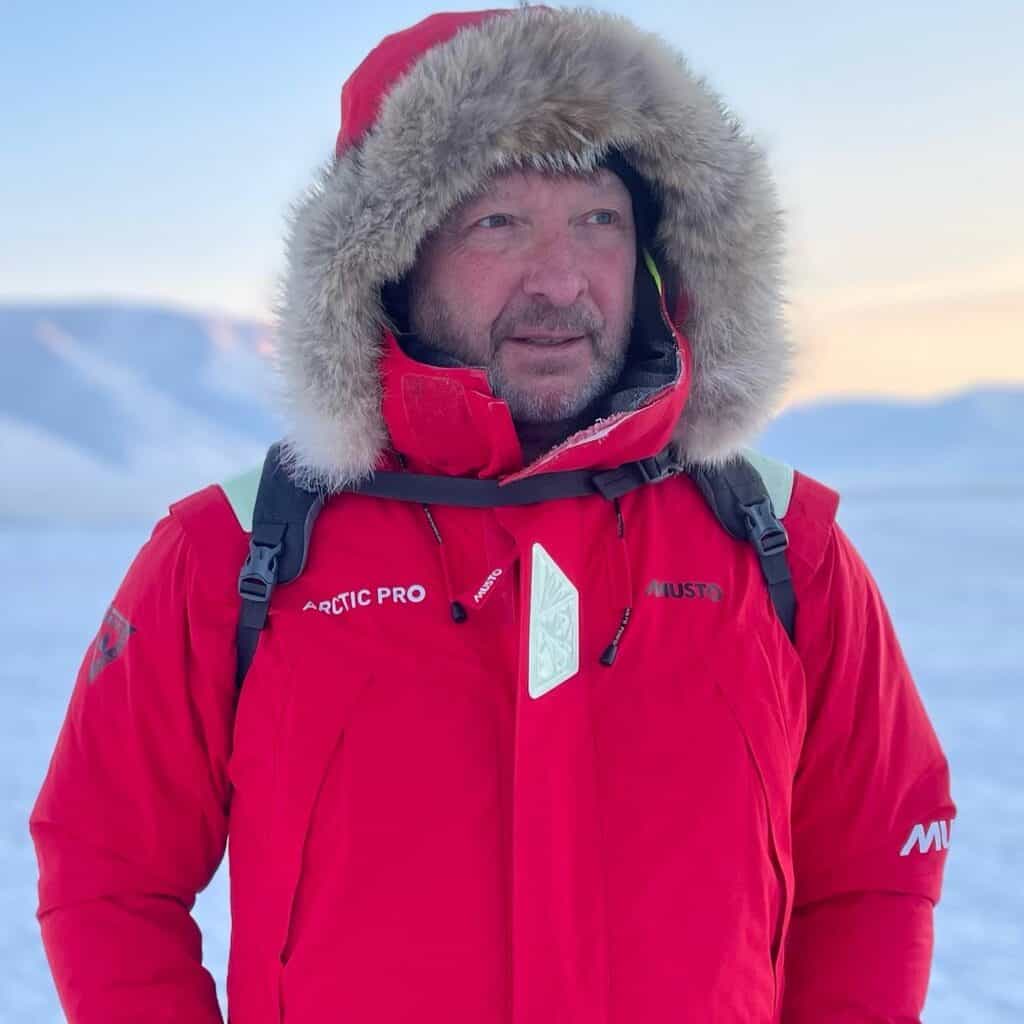
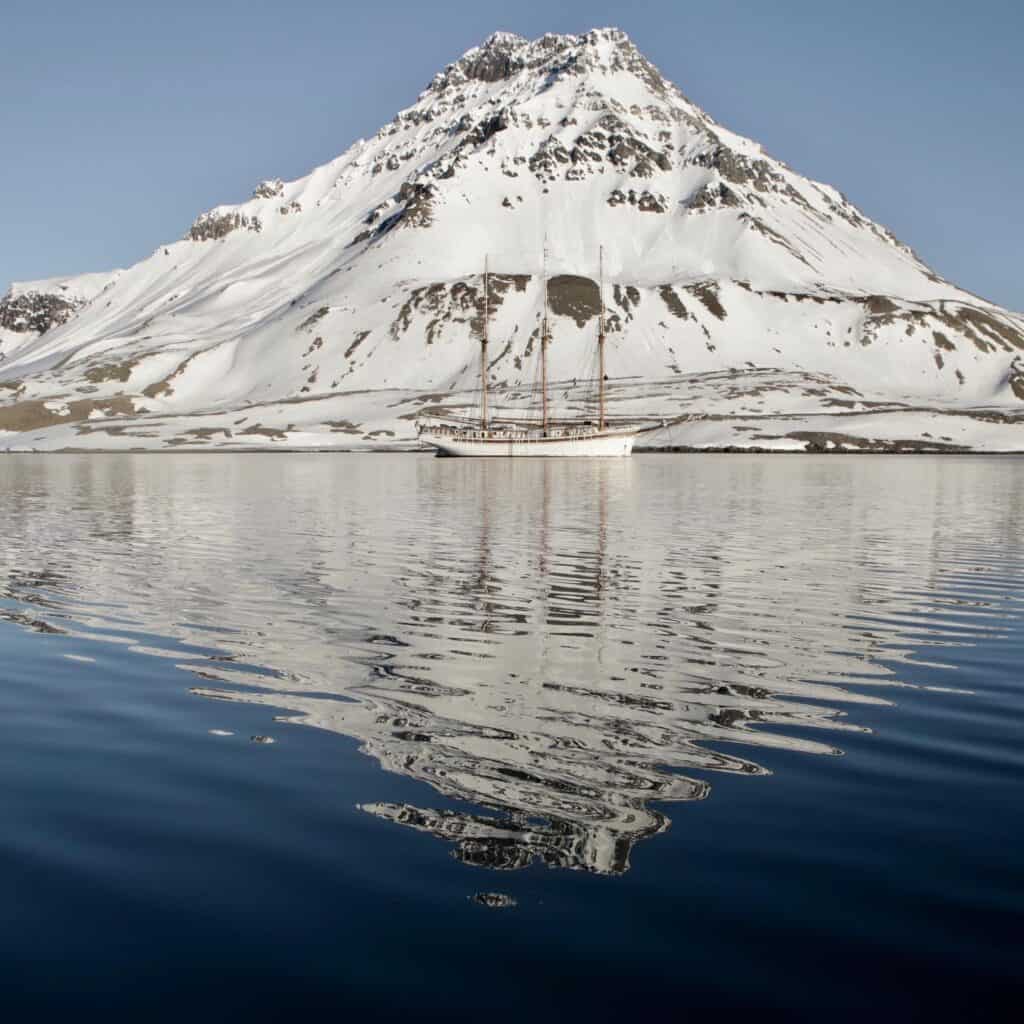
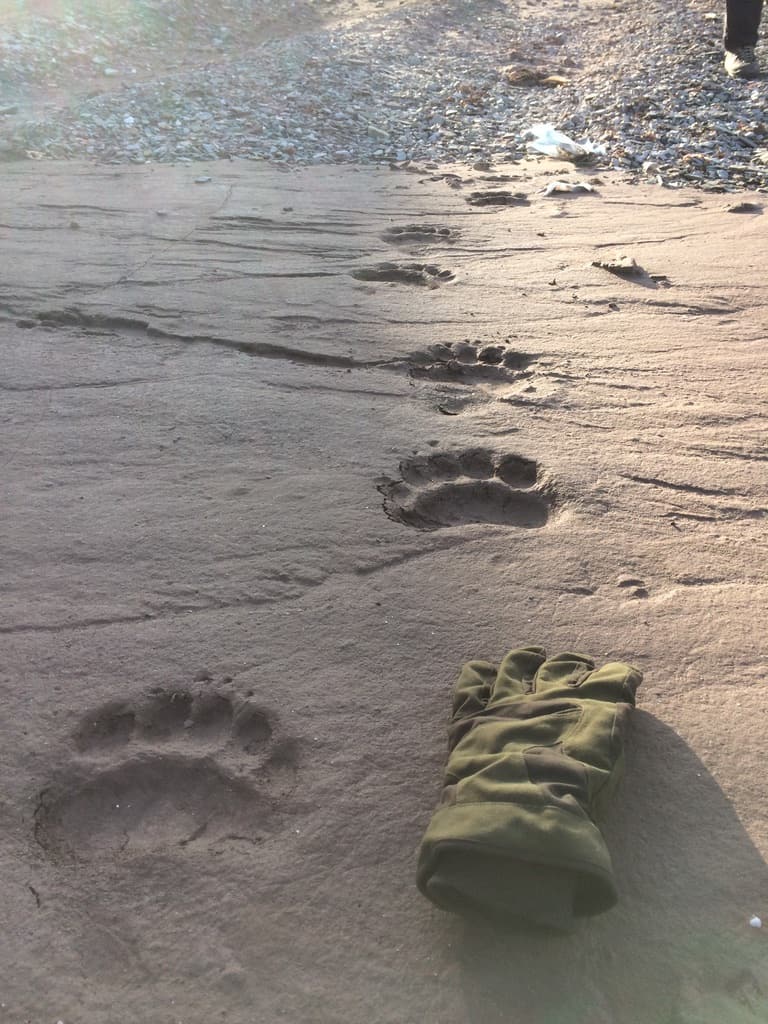
.
Ocean Warrior Information PackWe’ve based our polar expedition training for the Ice Warrior Project on the island of Spitzbergen in the Svalbard archipelago since 2005… A significant portion of the archipelago is permanently covered in ice and snow, and the terrain may appear unproductive and barren. However, upon closer inspection, the landscape is abundant with life, as plants and animals have adapted to the extreme conditions.
Svalbard has also captivated individuals with a fascination for Earth’s geological history. The archipelago’s rugged wilderness and breath-taking mountains have left a lasting impression on many visitors.
Jim McNeill
Read more from Jim about these wonderful islands below, and check out our Svalbard Wildlife Spotting Guide too!
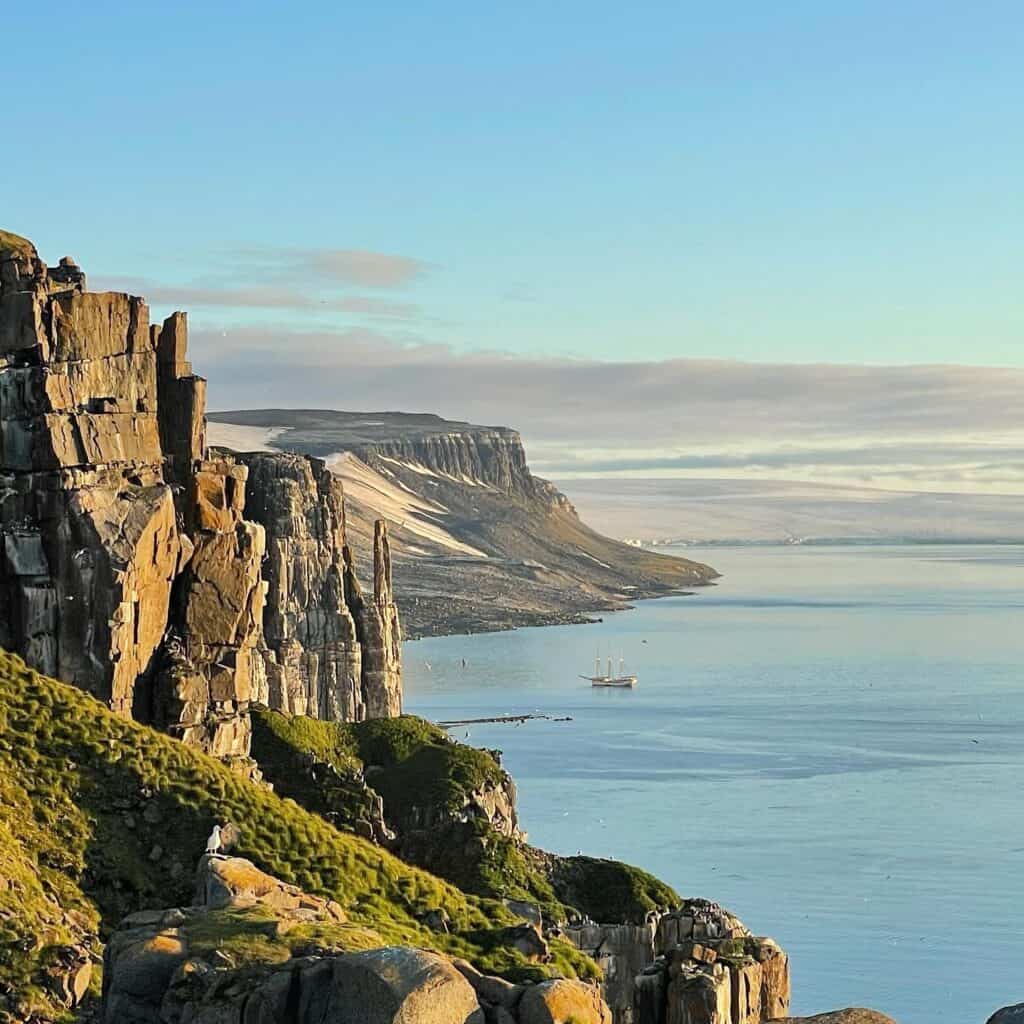
Flora & Fauna
Plant Life on Svalbard
From afar, Svalbard may seem like a desolate expanse of rocks, ice and snow. However, those who appreciate plant life will see a different side to these northern lands. As there are no trees or shrubs, the ground vegetation becomes more prominent. During summer, the valleys are covered in dense moss tundra. The greenery beneath the bird cliffs is lush and vibrant.
The plateaus offer a range of vegetation types. These serve as a bridge between the mountains and the sea, and display a variety of landscapes.
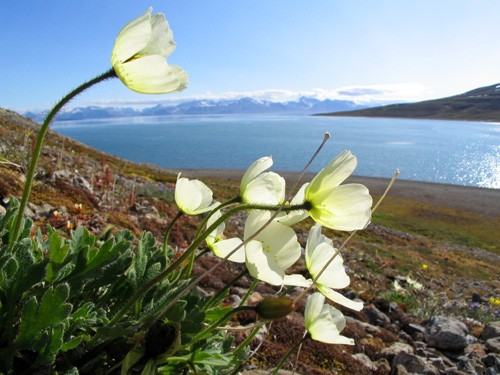
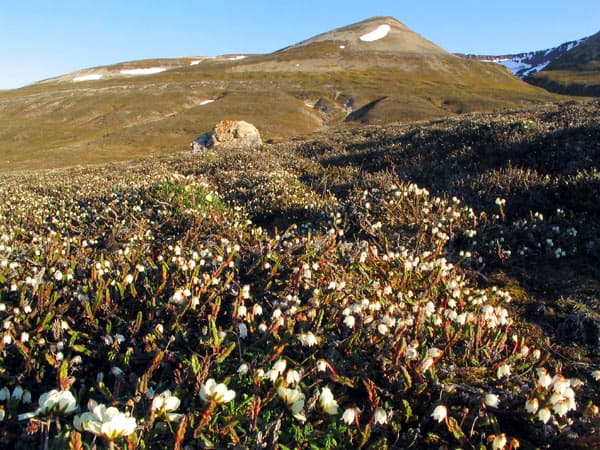
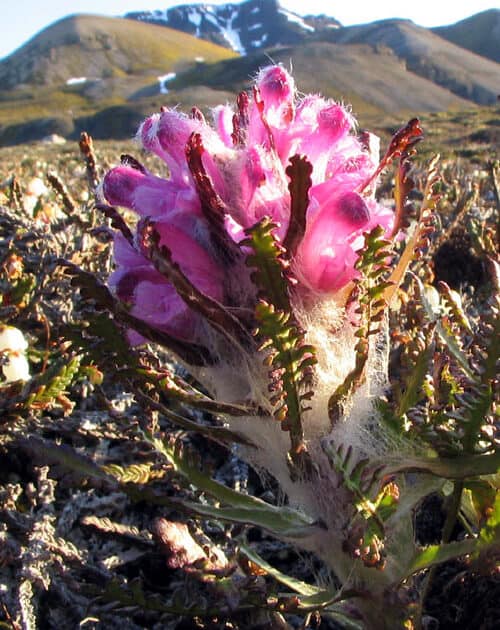
The growth and distribution of plants in Svalbard is limited by various factors. These include temperature fluctuations, short growth season, nutrient deficiency, wind exposure and soil movement due to freeze-thaw cycles. During the summer, the permafrost thaws 30 to 150cm, creating a shallow frost-free layer of soil where plants can grow. This layer also facilitates drainage of precipitation and meltwater.
As of 2015, over 175 vascular plants, 380 mosses, 700 lichens and 750 species of fungi had been documented in Svalbard. Biological diversity is low compared to the mainland, consistent with the general rule that diversity decreases with increasing latitude. However, many common Scandinavian alpine plants occur in Svalbard, as well as some species that are rare or absent on the mainland.
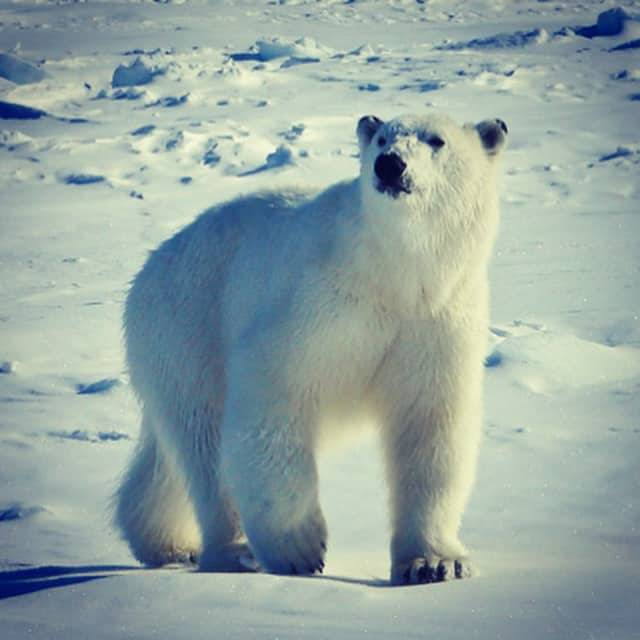
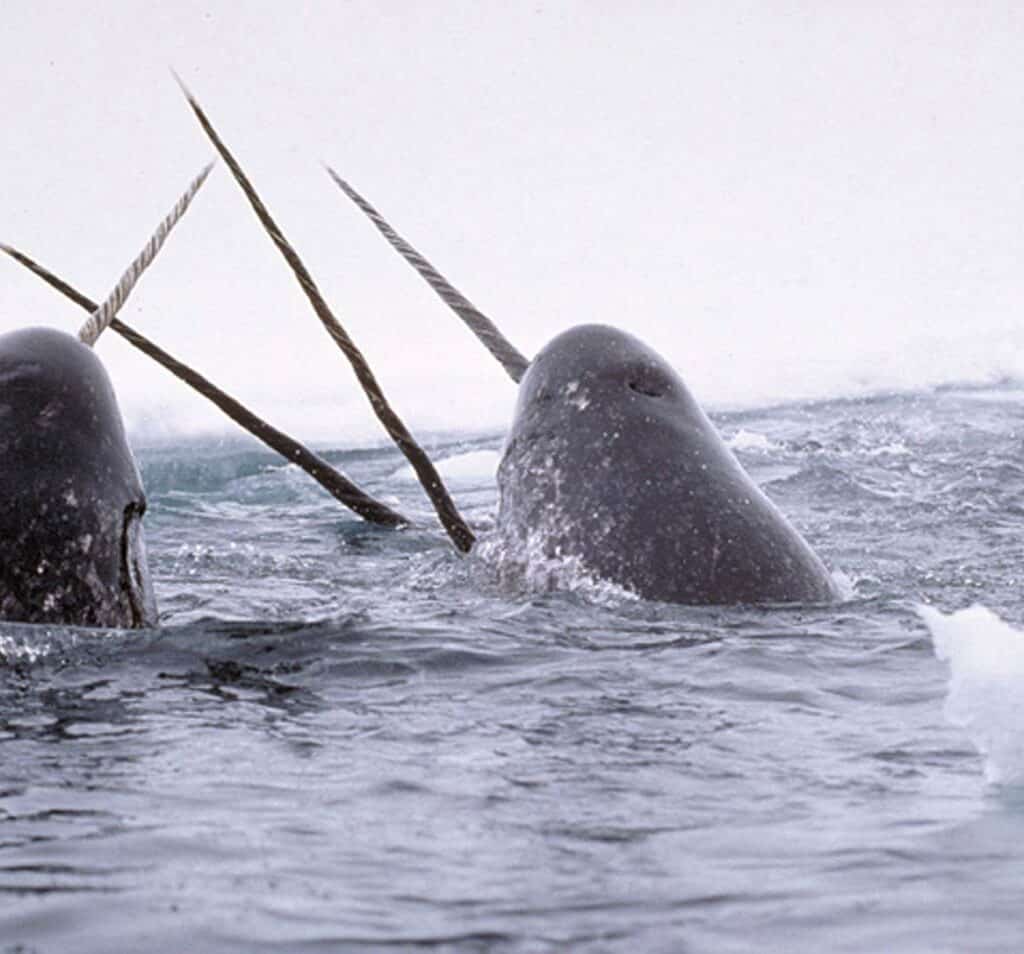
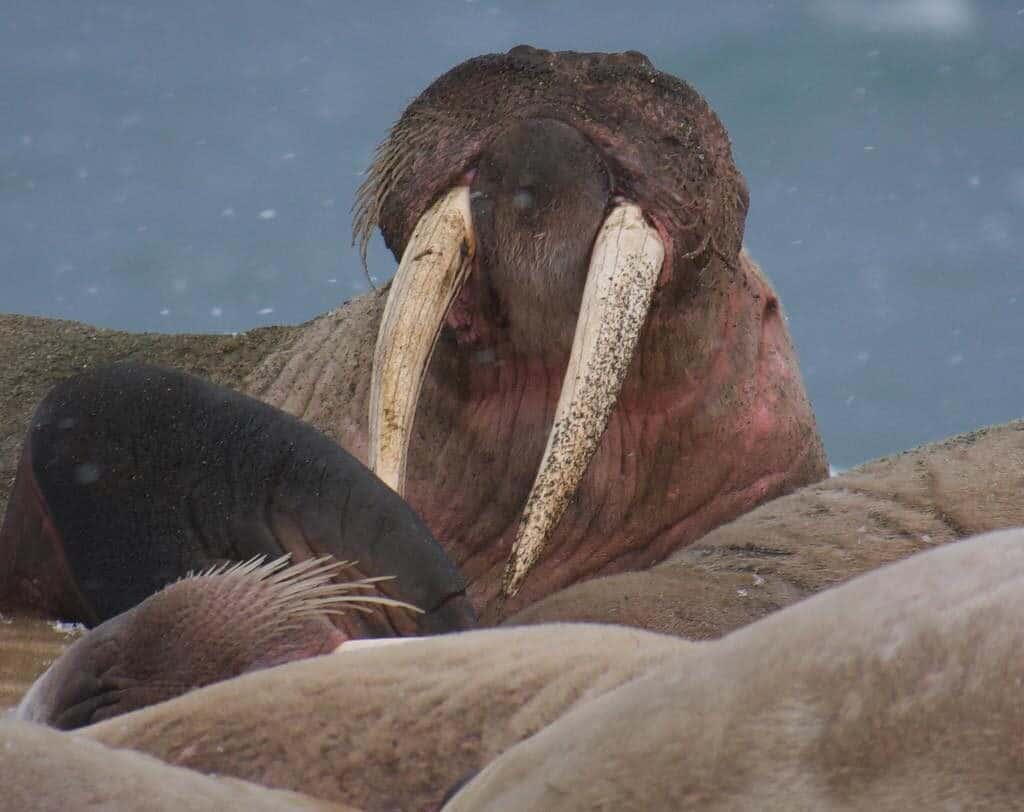
Svalbard’s Marine Mammals
In the waters surrounding Svalbard, a total of 19 species of marine mammal can be found. These include polar bears, walrus, five types of seal and 12 species of whale. While some are full time residents of the archipelago, others visit seasonally, in search of food during the summer months.
Svalbard Polar Bears
Svalbard’s most famous permanent resident is the polar bear. The archipelago is known as one of the world’s best places to observe them. In 2004 the local population was estimated to be around 3000 animals. Although polar bears can be found anywhere in Svalbard, they are most frequently seen in the northern parts of Spitsbergen. In the summer they can also be seen on the east coast and Nordaustlandet and surrounding islands.
Walrus
Walruses are found in significant numbers in Svalbard. Bulls reach up to 1500kg and 3.5m long. As they are social animals they usually gather in large groups on ice flows and skerries: an impressive sight! The bulls tend to stay in Spitsbergen, while the cows and calves prefer the northeasternmost parts of Svalbard and Franz Josef Land.
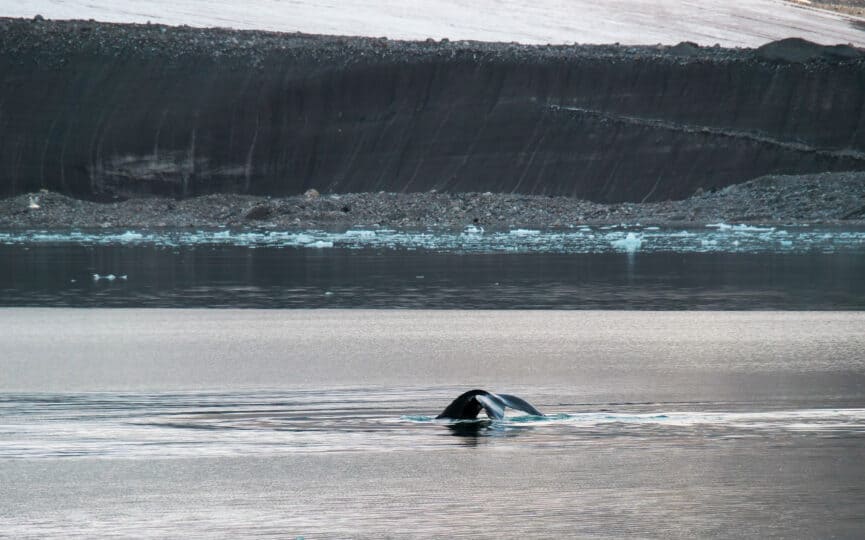
Seals
Bearded and harbour seals are abundant in the archipelago, but harp, ringed and hooded seals can also be seen. The largest seal specials in Svalbard is the Bearded Seal, with females reaching weights of up to 425kg in spring. Svalbard is also home to the world’s northernmost Harbour Seal population. These sociable creatures operate in small groups and are a common site at Prins Karls Forland and along the western coast of Spitsbergen.
Whales & Dolphins
Svalbard also hosts several species of whale and dolphin. Narwhals, white whales and bowhead whales are all resident year round, but many others can be seen seasonally. These include blue whales, fin whales, humpbacks, minke whales, sperm whales, orca, pilot whales and white-beaked dolphins.
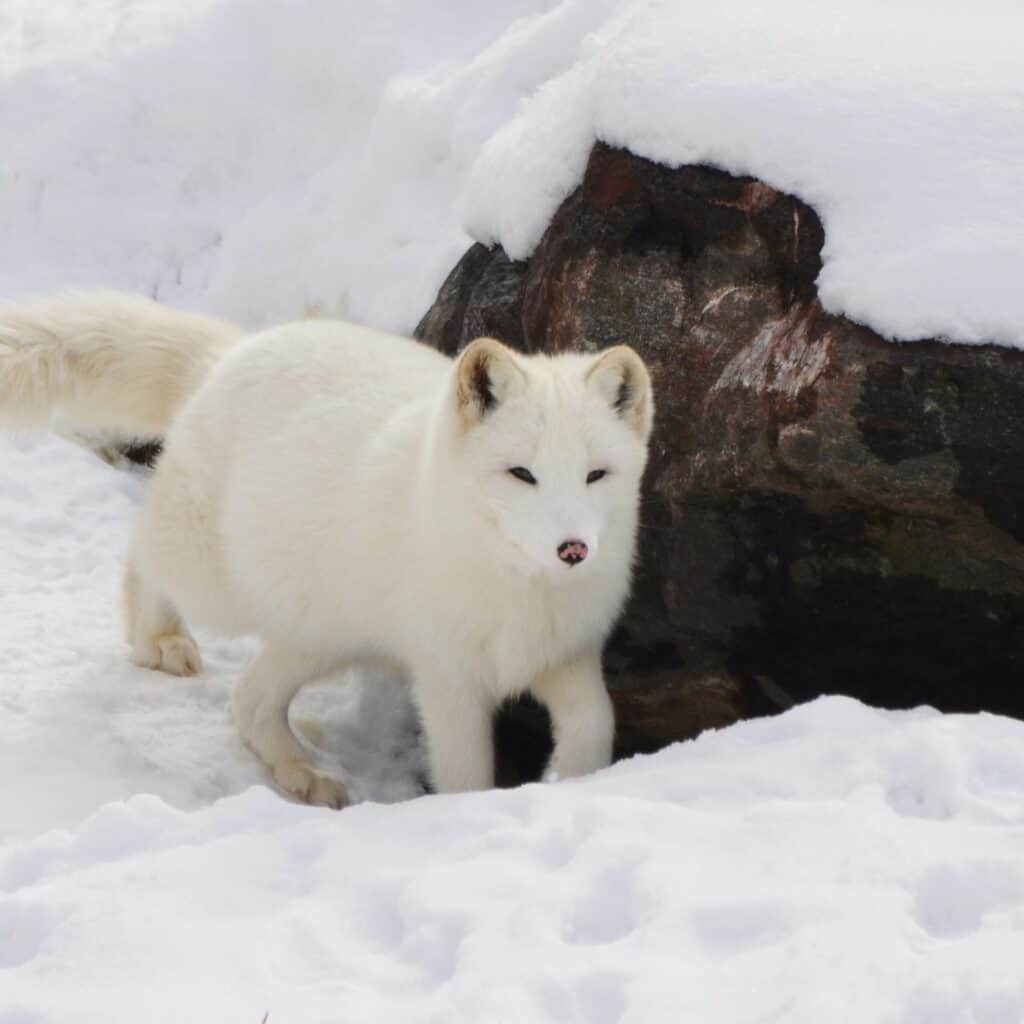

Terrestrial Animals on Svalbard
There are only three types of land-based mammals on Svalbard: reindeer, arctic foxes and sibling voles. The vole is believed to have been brought to Svalbard in animal fodder at the Russian mining settlement of Grumantbyen.
Svalbard Reindeer
The Svalbard reindeer is a distinct sub-species and is a common sight, particularly in Longyearbyen. It has a distinct appearance with short legs, small rounded head and a thick coat. In summer they move to lower areas with lush vegetation to accumulate fat for the winter. Females give birth in June.
Arctic Foxes
Arctic foxes are considered endangered in mainland Norway, but their population in Svalbard is thriving. They are widespread throughout the archipelago and can easily be spotted along the coasts. They find plentiful food in the form of eggs and chicks from the bird colonies.
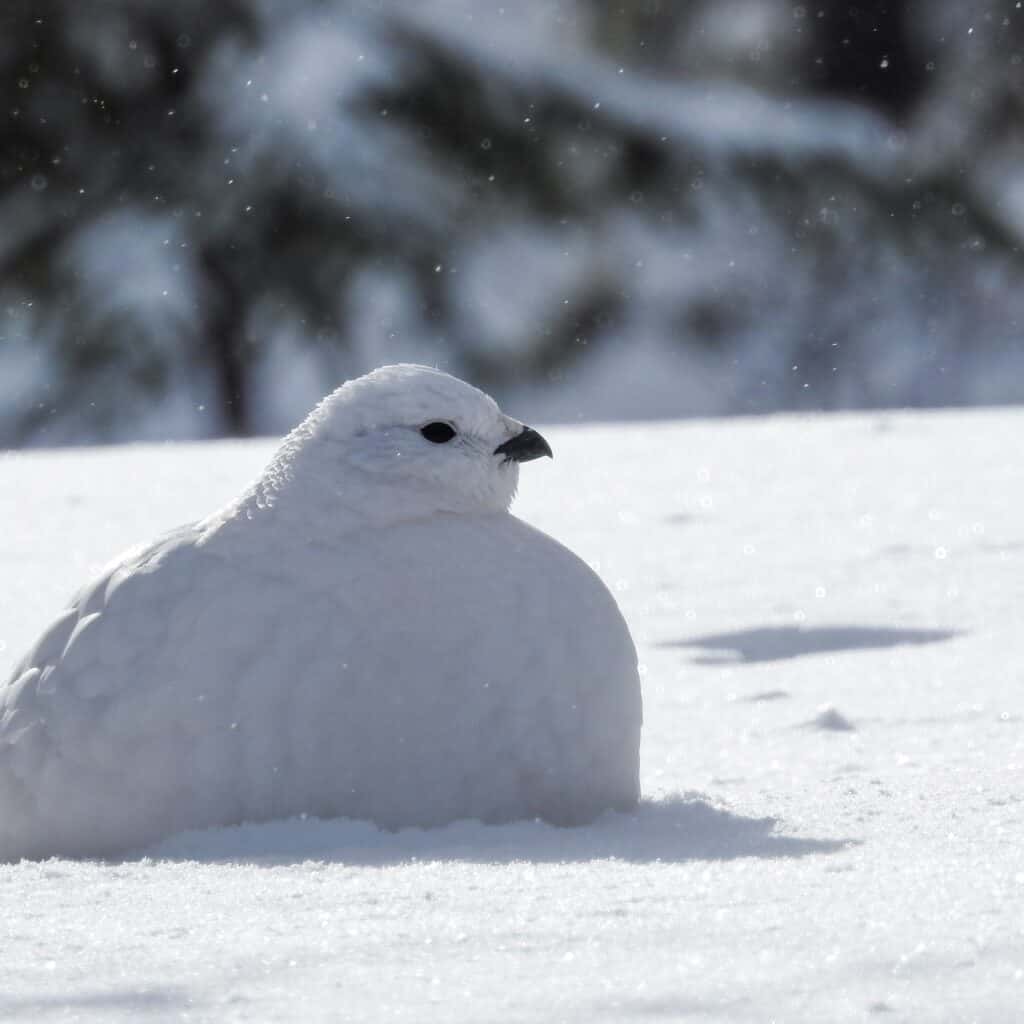
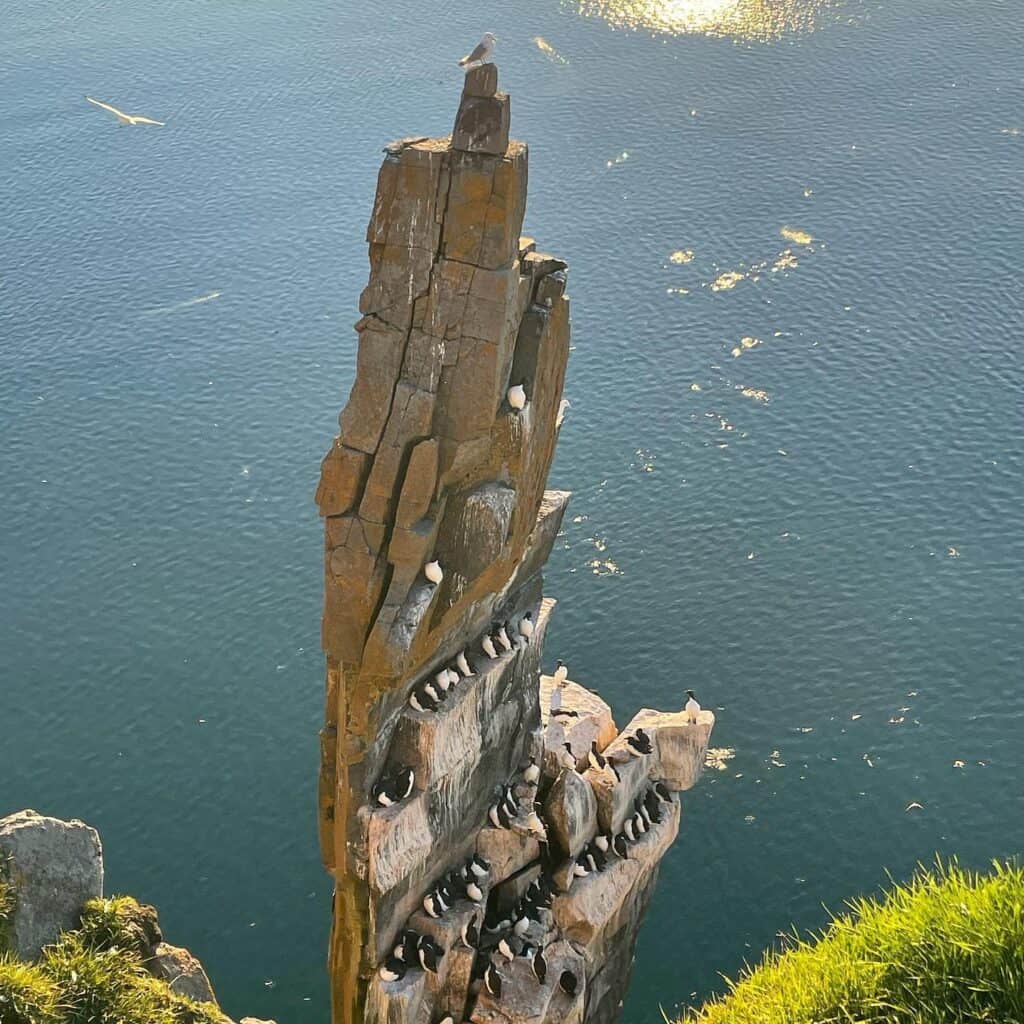
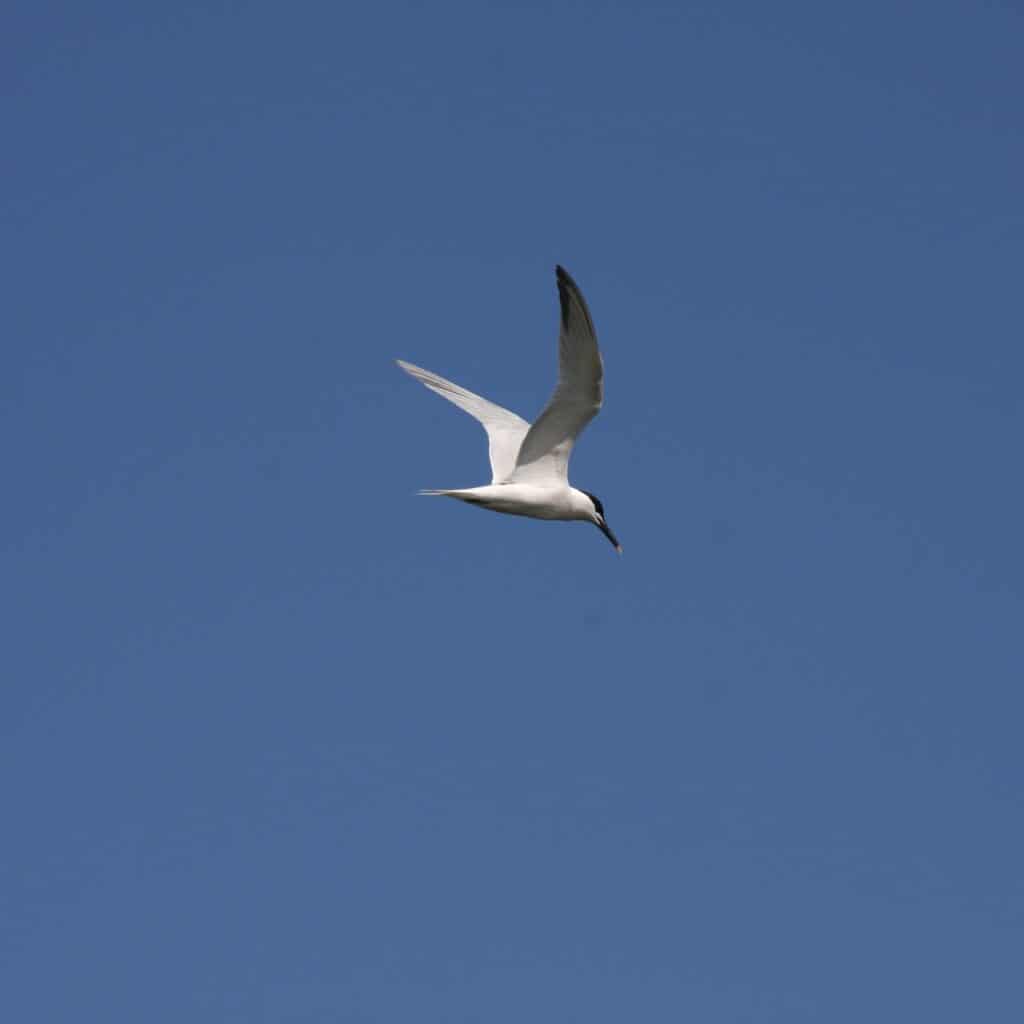
Svalbard’s Bird Life
The islands of Svalbard are bustling with birds, especially during the summer months when the breeding colonies are in full throat. Over 230 different species have been recorded here, and 45 species are considered regular breeders on the archipelago.
Svalbard has its own sub-species of rock ptarmigan. The highest population densities are in central areas of Spitsbergen where plant life is abundant. During March and April it’s possible to hear the distinctive burping sound of the male as he defends his territory.
You may also hear the voice of the world’s most northerly perching bird (and the only songbird in Svalbard); the tiny snow bunting. Breeding in Svalbard, snow buntings are present on the archipelago from April to September.
Little auks and puffins both breed here too. Little auks number around 1 million in the summer, spread across 200 colonies in the west of Spitsbergen. They require certain characteristics in their breeding sites; marine cliffs with boulders under which they can nest. Guillemots prefer sheer cliff faces. One key colony is at Alkerfjellet: the ‘mountain of the guillemots’.
Waders on the islands include the grey phalarope, purple sandpiper, sanderling, dunlin and ruddy turnstone, as well as several species of goose.

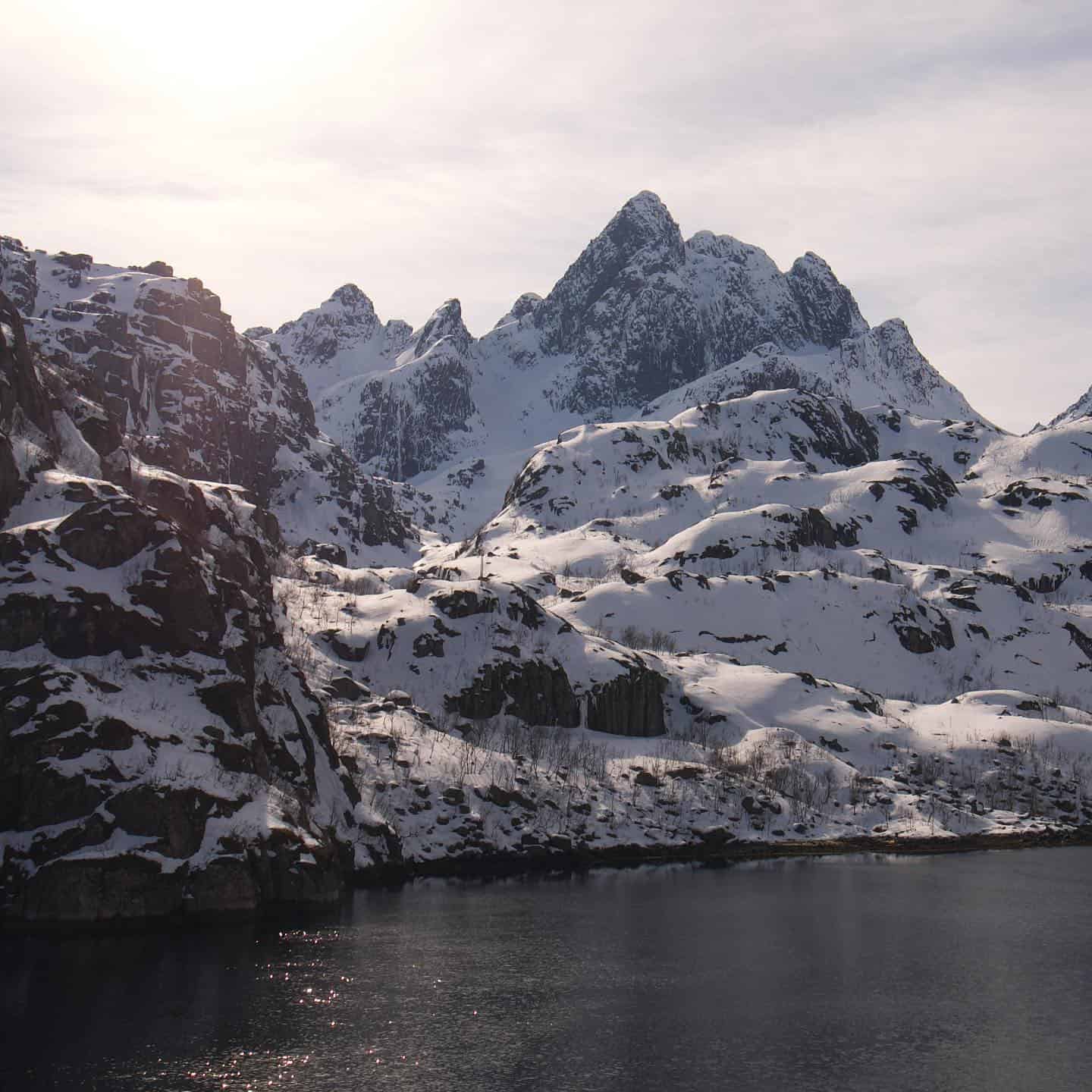
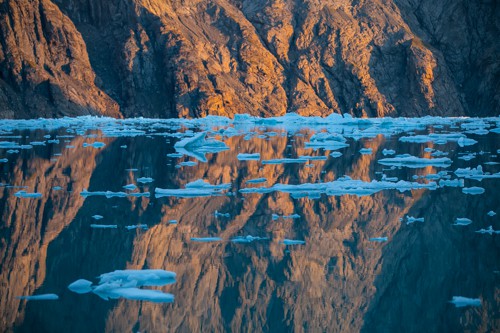
Geology
The varied geology of Svalbard (which you can see in detail on this Topographical Map) has given rise to an array of landscapes. From the jagged mountain ridges encircling Hornsund, to the flat-topped nunataks on the east coast of southern Spitsbergen. The terrain surrounding Woodfjorden is characterised by gentle slopes with unique reddish hues.
Svalbard stands out among northern European locations in terms of Geological interest. It has a wide range of geological formations and an abundance of exposed geological eras. Due to the limited soil and vegetation in many areas, the bedrock can be easily studied over long distances. These distinctive features make Svalbard an exceptional destination for studying geological processes, or simply appreciating the stunning landscape.
There is a fairly common misconception that Svalbard was once situated near the Equator. This is not entirely accurate. Rocks found in Svalbard, as well as Norway and other parts of the world, were formed in different climate zones. This includes the tropical zone during the Devonian period. The convection currents in the Earth’s mantle and the displacement of the Earth’s surface with respect to its rotational axis, are the primary reasons for the current location of these rocks in the Arctic. However, during the Devonian period, Svalbard was not yet formed. Much of its bedrock was still buried beneath the surface.
Over time, tectonic processes such as subsidence, uplift, deposition and erosion have significantly altered Svalbard’s geographic condition. There have been major changes in land and sea distribution, topography and relief.

The islands provide an opportunity to see a range of fascinating geological features:
Creeping Rock Glaciers
Various landforms in the Arctic region are a result of permafrost. Rock glaciers are composed of rocks, gravel and sand that have been eroded from mountainsides and are saturated with frozen water. These glaciers slowly move downhill and have a distinct curved shape.
Patterned Ground
Hexagonal stone circles or earth cracks known as patterned ground can be found in flat areas. These are formed through the freezing and thawing of the ground layer. The geometric shapes created result from ‘frost heaving’, the expansion of fine soil when it freezes. To the untrained eye patterned ground can look like a man made artistic installation!
Pingos
Pingos are mounds of earth-covered ice that form due to the interaction of permafrost and springs, often found at the bottom of valleys. They appear like gravel hills with a small pond or active spring on top.
Thermokarst
Thermokarst is a system of channels in the permafrost through which water circulates. These form holes or depressions on the surface where ponds or lakes can develop. One notable example is located on Vardeborgsletta near Isfjorden.
Volcanic Activity
In the past, there was active volcanism in north-western Spitsbergen during the Quaternary period. Sverrefjellet being the most prominent volcano between 100,000 and 250,000 years old. The thermal springs by Bockfjorden indicate that the geothermal gradient in the area is still high due to this volcanic activity.

Svalbard’s Climate
It would be easy to assume that Svalbard’s climate consists of relentless snow and cold. However, thanks to the North Atlantic Current, the coastal climate on the archipelago is comparatively mild for its latitude. There is also very little precipitation, with less than 200mm annually. Most of this falls as snow in the late autumn and winter, with a little light rain in the summer months.
As a meeting place for mild southern sea air and cold northern polar air, Svalbard is often a region of low pressure. This creates changeable weather and potentially high wind speeds, particularly in the winter. Things calm down in the summer months, with average wind speeds of 6 to 10 knots from May to October.
Winter temperatures average between -13°C and -20°C, rising to a relatively balmy 3°C to 7°C from June to August.
Land of the Midnight Sun
Given Svalbard’s high latitude location, the sun doesn’t set for much of the summer. There is 24hr daylight from late April to late August. 24hr Polar night starts in earnest in late October, meaning the equinoctial changes happen very quickly.
In September, daylight hours reduce significantly each day, from around 19 hours at the start of the month to only 7 by the end. The reverse is true in March. The longer the nights become, the greater the chances of experiencing the Northern Lights.
Explore Arctic Voyages